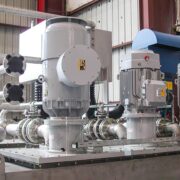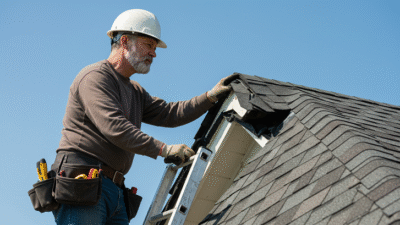A kitchen is the busiest place in the house; therefore, it becomes critical to design it so that everyone can work without getting into the way of the other person or causing others to wait until they finish their task. Simultaneously, no one would enjoy the sight of appliance doors knocking on the cabinet doors or a kitchen island that almost looks like a dining table. All these hassles are avoidable with proper space planning. You can create the perfect kitchen layout if you keep a few details in mind when designing. Are you aware of the National Kitchen and Bath Association (NKBA)?
The association guides you on the kitchen and bathroom design basics to ensure maximum safety and performance in the respective areas. Since the focus is on the kitchen, you can look into what they suggest about storage, doors, and other elements. It would be useful if you embraced them in the interiors as much as possible. After all, these rules are also about protection in the kitchen. So if you have to expand your budget a bit or compromise a few features, you should not worry. Incorporate the best that you can. Nevertheless, here are some suggestions.
Table of Contents
The doors in the kitchen
Whether it is the entrance or cabinet doors, your kitchen has to give them their due space. As per standards, the entry door should have an average width of 32 inches. Every door should have enough clearance for the other to avoid interference or unwanted bumping.
Everything about the work area in the kitchen
Suppose there are three work centers. The total distance between them should not exceed 26 feet. The legs of the work triangle should not be under four feet and above nine feet. Besides, the intersection between the work triangle leg and island has to be within the limits of 12 inches. When you talk of the work triangle, it consists of the cooking zone, prep area, and refrigeration. Experts recommend that a refrigerator or a pantry cabinet should not come between two primary work areas, cooking and prepping zones. The depth, height, and tallness can create an obstacle. Besides, the work traffic patterns should also be apparent in the work triangle.
In this context, you need to know that the work aisle can be 42 inches and 48 inches wide for one and multiple cooks, respectively. Your walkway width can be 36 inches.
Seating area in the kitchen
Some kitchens also include dining space, especially if it has ample or adequate room. If your kitchen affords this, you can ensure that the dining table edge and the wall have at least 32 inches of clearance behind the seating section. However, it is about that part which doesn’t allow any traffic. If there will be traffic behind the seating area, the clearance can be 36 to 44 inches. Other than this, there are specifications about the dining table as well. Tables or counters can be 30-inch high. The diner should get a knee space of 24 inches wide and 18 inches deep. If the counter height is 36 inches, knee space should feature 24 inches in width and 15 inches in depth. Dining tables with 42 inches height can provide 12 inches deep and 24 inches wide knee space.
Sink/ prep area in the kitchen
In case there is one sink, you can keep it close or across the cooking top and refrigerator. One side of the sink area should be a minimum of 24 inches wide, and the other 18 inches. The worktop next to the sink can be 36 inches wide and 24 inches deep. Do you have a dishwasher? You can keep it within 36 inches of the sink reach. The space between the dishwasher, cabinets, or appliances can be 21 inches. According to experts, you can include two waste disposals; one can be close to the sink and another in the kitchen where you would recycle. You can also have an extra sink if space allows.
Whether you have one or two primary sinks with an auxiliary or bar sink, you will want to pair them with the appropriate faucets. Deciding on a kitchen water fixture will be easy if you know your rituals and kitchen habits. If you need to fill tall pots and pans, going for gooseneck designs can be best. For greasy and stubborn stains, you will need taps that offer the powerful force of the water. So, keep these things in mind when you shop for this plumbing appliance.
The cooking area in the kitchen
The cooking surface should be at least 12 inches on one side and 15 inches on the other. The countertop can be at least 9 inches more behind the cooking top. The gap between a range hood or a fireproof surface and a cooking surface can be 24 inches. However, the distance between the cooking surface and combustible surface, such as overhead cabinets, can be 30 inches. If your kitchen has a microwave hood, you can stick to the manufacturer’s guidelines. All the ducted ventilation system needs to be 150 CFM.
One thing is essential – the cooking surface is not under the operable window. And if there is a window, it should not consist of flammable materials. It would be best if you kept a fire extinguisher close to the kitchen exit, at a distance from cooking appliances. Besides, every corner in the cooking zone should have proper lighting, including task lights.
These are some general guidelines for kitchen safety and security. You can still follow them while maintaining the supreme aesthetics. The basic knowledge will help you carve a beautiful and safe kitchen in your home. Your certified interior designer will already have an updated understanding of these. So, there is nothing to fret about, even if you cannot remember. You can talk to them and get clarity about specific features and uses to avoid confusion. In the end, all you want is a well-equipped kitchen that is accessible, functional, and free of hazards.

















Comments